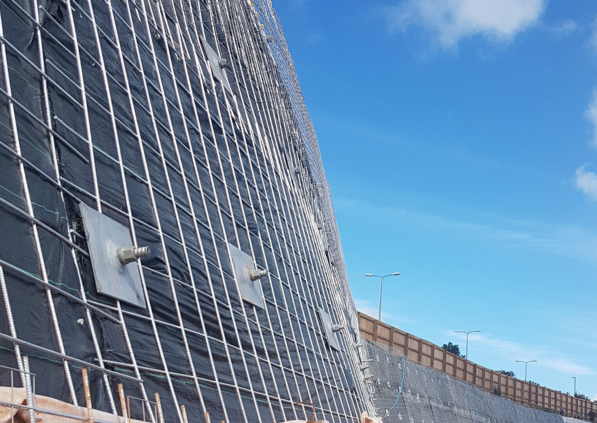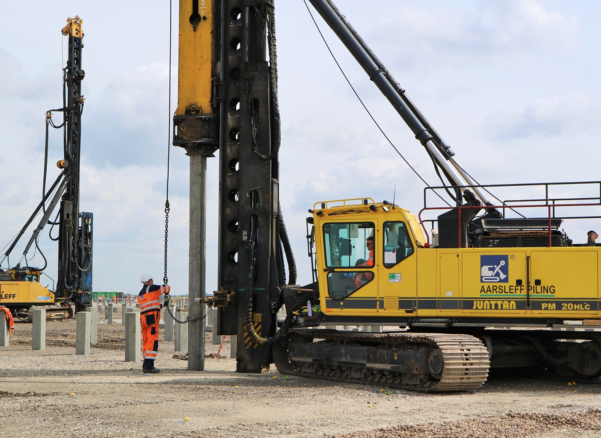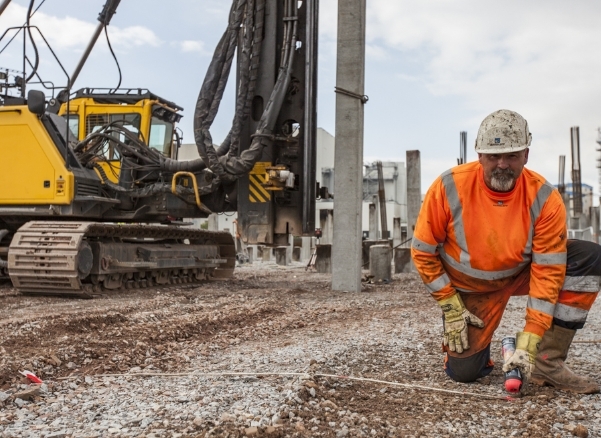What are Soil Nails?
Table of Contents
- Common Uses
- History
- How Does Soil Nailing Work?
- How Are Soil Nails Installed?
- How Much Do Soil Nails Cost?
- Advantages
Common Uses
Soil nailing is a ground engineering technique for stabilising slopes, excavations and retaining walls. It involves the use of soil nails (long steel bars), which are grouted into pre-drilled holes in the ground as a way of reinforcing the soil. [1]
Soil nails are suitable for both permanent and temporary retaining walls. other applications such as tunnel portals, roadway cuts, bridge abutments, erosion control, landslip prevention, and repair of existing retaining structures. [2]
They are also a cost-effective method for long or short-term stabilisation of steep existing or proposed slopes. Typically used to stabilise existing slopes or excavations where top-to-bottom construction, soil nailing is advantageous compared to other retaining wall systems. These walls are particularly well suited to excavation applications for ground conditions that require vertical or near-vertical cuts.

History
Soil nailing evolved from the New Austrian Tunneling method, which is a system for underground excavations in rock. This system consists of passive steel reinforcement in the rock followed by the application of reinforced shotcrete. Since the early 1960s, the concept of combining passive steel reinforcement and shotcrete has also been applied to the stabilisation of rock slopes.
The first application of soil nailing was implemented in 1972 for a railroad widening project near Versailles, France. Soil nails were used to stabilise an 18-meter (59 ft) high slope consisting of sandy soil. This method proved to be more cost-effective, while at the same time cutting down the construction time when compared to other conventional support methods.
The United States first used soil nailing in 1976 for the support of a 13.7m deep foundation excavation in dense silty sands. Soil nailing was implemented in the expansion of The Good Samaritan Hospital in Portland, Oregon. This retaining system was produced in approximately half the time at about 85% of the cost of conventional retaining systems. [3]
How Does Soil Nailing Work?
First, the slope or wall which needs to be stabilised is predrilled. Soil nails are inserted and grouted firmly to hold the soil in place. If the soil contains corrosive elements, then the soil nails need to be coated in anti-corrosives to protect them. For optimum slope stability, a covering later fixes the soil nails in place.
After the soil nailing process has been completed, shotcrete is commonly used to secure the reinforcing rods. There are also other options used, such as creating a green or living wall. The type of retaining wall used is influenced by the environment of the construction. In some cases, structural steel mesh cladded with a facing mesh is used and filled with a graded hardwearing local stone.
Soil nails are a durable solution, with an expected minimum lifespan of 100 years. This is an advantage of the solution, as anchoring and retaining wall alternatives may have similar lifespans, but will require more maintenance and repair.

How Are Soil Nails Installed?
The process is carried out in the following steps:
- An excavation is started to expose a soil face – typically in a top-down manner. Excavation is done to a depth for which the face of the excavation is able to remain unsupported for some time.
- Small diameter holes (typically 100-300mm) are drilled along the facing in a predetermined sequence to a specific length and inclination, most commonly in the horizontal spacing of 1-2m between each nail.
- Steel bars are then inserted in the predrilled holes and filled with clean cement grout (the migration of water towards the excavation should be prevented)
- A temporary shotcrete facing is applied, typically 75-100mm thick. This will protect the excavated face and fill cracks and voids in the face.
- The shotcrete can even be textured to resemble local geology.
- The next level is excavated and steps 1-4 are repeated.
- A permanent wall facing is applied, typically 150-300mm thick. It is applied to the soil nail wall in layers.
How Much Do Soil Nails Cost?
A budget plan for pricing work would include preparatory work, drainage system, soil nailing, and shotcrete (facing).
A cost estimation for soil nailing considers the four variables:
- Length
- Horizontal distance
- Safety factor (SF)
- Time
By analysing the required work, a method for calculating the unit price for the construction can be done. This includes the cost for the materials needed, the labour of installation, and the equipment used to complete the soil nail construction works.
Advantages
- A cost-effective solution for permanent or temporary retaining walls.
- Ideal for sites which have a limited amount of space, as there is little need for room to manoeuvre.
- Soil nailing can follow irregular and tight corners, as well as provide stability to the wall from the top to the bottom. This means that the soil can be secured whilst workers continue to dig down deeper.
- It is a rapid and economical method
- Grouting is only required once
- Soil nails are not prestressed
For more information on the advantages of soil nailing, watch our dedicated video:
Sources
- Design Buildings. (2020). Soil Nailing. Retrieved 3rd December 2024, from:
https://www.designingbuildings.co.uk/wiki/Soil_nailing - The Constructor. (n.d.). Soil Nailing Technique, Its Types, Applications and Installation Considerations. Retrieved 3rd December 2024, from:
https://theconstructor.org/geotechnical/soil-nailing-technique-types-applications/9484/ - Lazarte, Carlos A.; Elias, Victor; Sabatini, P. J.; Espinoza, R. David. (2003). Geotechnical Engineering Circular No. 7 - Soil Nail Walls. Retrieved 3rd December 2024, from:
https://rosap.ntl.bts.gov/view/dot/50250








